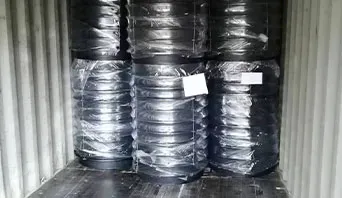Understanding Wharf Bollards and Their Importance in Marine Operations
The Significance of Wharf Bollards in Maritime Infrastructure
Wharf bollards are essential fixtures in the maritime industry, serving a vital role in ensuring the safety and functionality of docking operations at ports and harbors. These robust posts, typically made of steel, concrete, or a combination of materials, are designed to secure vessels to the dock, preventing unwanted movement caused by wind, tide, or waves. As a cornerstone of maritime infrastructure, bollards are critical not only for the stability of moored vessels but also for the overall efficiency of port operations.
Understanding Wharf Bollards
At their core, wharf bollards are simple yet engineered for high performance. They come in various shapes and sizes, with designs that cater to the specific needs of different types of vessels, from small fishing boats to large container ships. The strength of a bollard is determined by its size, material, and the way it is anchored into the dock structure. A well-designed bollard can prevent excessive lateral shifting of a ship while also allowing for the necessary movement that accommodates tidal changes and wind forces.
The placement of bollards is also crucial. They are strategically positioned along the dock, taking into account factors such as the expected size of the vessels, the nature of the cargo being loaded or unloaded, and the oceanic conditions particular to that location. Proper placement ensures that each vessel has adequate points for securing lines, thereby optimizing safety and stability.
The Role of Wharf Bollards in Port Operations
The functionality of wharf bollards extends beyond merely securing vessels. They play an integral role in the efficiency of loading and unloading cargo. In ports where large container ships dock, for example, the size, strength, and arrangement of bollards can impact the turnaround time of vessels. Efficient docking operations lead to reduced waiting times, minimizing costs for shipping companies and expediting the movement of goods globally.
Moreover, bollards provide essential safety measures during cargo operations. Properly secured vessels reduce the risk of accidental displacement, which can lead to significant hazards, including collisions with other ships or damage to the dock itself. In adverse weather conditions, well-secured ships are also less likely to drift, ensuring the safety of both personnel and equipment involved in maritime operations.
wharf bollard

Innovations and Developments in Bollard Design
As with many elements of maritime infrastructure, wharf bollard design continues to evolve. Recent innovations focus on improving the resilience and functionality of bollards to accommodate larger vessels and harsher marine environments. Advances in material science have led to the introduction of high-strength composites and corrosion-resistant coatings, which can significantly extend the lifetime of bollards while reducing maintenance costs.
Furthermore, the integration of technology into the design of wharf bollards is gaining traction. For instance, sensors can be incorporated to monitor the tension on mooring lines, providing real-time data to port operators. This information can be critical for making informed decisions during docking operations and for enhancing safety protocols.
Environmental Considerations
The construction and maintenance of wharf bollards also come with environmental considerations. Ports are increasingly adopting sustainable practices in their operations, which include the selection of eco-friendly materials and designs that minimize their impact on marine ecosystems. Innovative designs that reduce sediment displacement and avoid habitat destruction are becoming more common in modern wharf construction.
Additionally, the geographical location of a port may necessitate specific bollard designs to adapt to local climatic conditions. For instance, ports in hurricane-prone regions may require reinforced bollards that can withstand significant forces, ensuring that both the vessels and the port's operations are safeguarded against extreme weather events.
Conclusion
In summary, wharf bollards are a fundamental element of marine infrastructure, functioning as the backbone of safe and efficient docking operations. They exemplify the intersection of engineering, safety, and operational efficiency, reflecting the complexities involved in modern maritime logistics. As the shipping industry continues to evolve, so too will the design and functionality of wharf bollards, ensuring that they remain a critical component of port operations for years to come. By investing in robust and innovative bollard designs, ports can enhance their resilience, boost efficiency, and maintain safety for crew, cargo, and vessels alike.
-
The Smarter Choice for Pedestrian AreasNewsJun.30,2025
-
The Gold Standard in Round Drain CoversNewsJun.30,2025
-
The Gold Standard in Manhole Cover SystemsNewsJun.30,2025
-
Superior Drainage Solutions with Premium Gully GratesNewsJun.30,2025
-
Superior Drainage Solutions for Global InfrastructureNewsJun.30,2025
-
Square Manhole Solutions for Modern InfrastructureNewsJun.30,2025
-
Premium Manhole Covers for Modern InfrastructureNewsJun.30,2025
